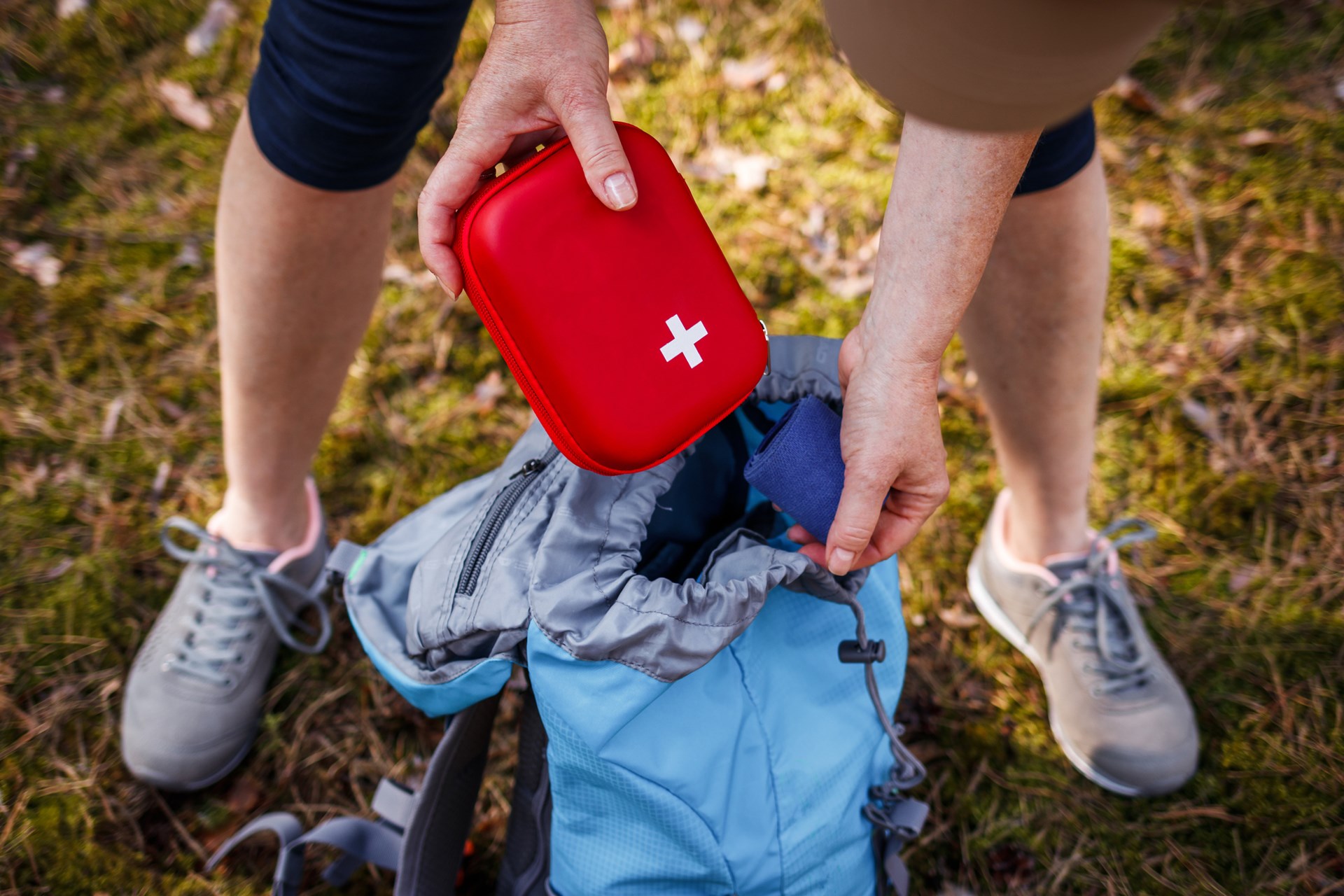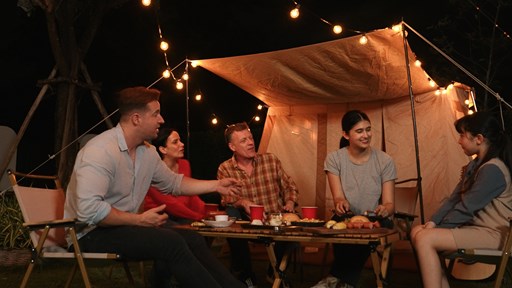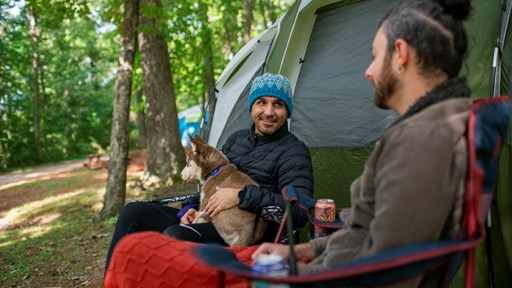You’re already packing useful things like food, shelter, and clothing when you go camping. But what should you bring to help fend off the elements out on the trail or while doing an activity? We’ve compiled a list of items that can make a difference during an emergency in the great outdoors.
1. First Aid Medical Kit
Ensure a fully replenished first aid kit is included with your camping gear. Supplies to treat wounds, burns, blisters, cuts and scrapes, sprained ankles or wrists, and to stop bleeding are necessary. Elastic bandages, disposable gloves, antiseptic wipes, medical scissors, Band-Aids, and tweezers help to treat injuries, while medication for allergic reactions, pain and fever, inflammation and diarrhea relieve symptoms of illness.
2. Aloe Vera
Remember to apply sunscreen and reapply frequently. If you still get a sunburn, use an “after sun” product containing aloe vera to help reduce painful inflammation while moisturizing the skin to keep it from peeling.
3. Spray Bottle & Portable Fan
Wear clothing to protect your skin from the sun while also keeping you cool, and always stay hydrated. If you feel over-heated, seek shade to lower your body temperature. If heat exhaustion sets in, spritz cold water from a bottle on the affected person and direct cooling air at them with a portable fan.
4. Cooling Towel
Another way to avoid heat exhaustion is to get a cooling towel, nice and wet, and wrap it around your neck when you hike or do an activity out in the sun. To keep the towel cool, periodically add fresh water.
5. Mylar Blanket & Heat Packs
Hypothermia is a threat when cold weather strikes or if contact is made with freezing water. As part of helping someone bring their body temperature up, they can be wrapped in Mylar blankets with heat packs applied (wrapped in cloth over the blanket) to their core at the neck, chest or groin. But first, get them to the warmest, protected space available and out of wet clothes.
6. Ice Packs
Cold compress ice packs can help relieve muscle aches and strains from a long day on the trail, but they can help in other instances too. Apply ice packs to insect bites or stings to reduce swelling before using a topical treatment.
7. Calamine Lotion
Brush up against poison ivy, oak or sumac? Calamine lotion can soothe itching and pain related to the skin’s reaction to these plants. Calamine can also reduce pain and swelling resulting from bug bites and stings.
8. Insect Repellent
The great outdoors is full of insects, some of which would love to hitch a ride with us or bite into our skin. Insect repellent with DEET keeps these critters at bay, and if you’re camping in an especially inviting environment for insects, you may want to treat clothing, gear, and your tent with a permethrin repellent. These repellents will discourage tick attachment, which you can also protect against by wearing long pants and tops and by tucking pant legs into your socks. Repellents also protect against mosquitoes, bees, wasps and other crawlies.
9. Backpacking Canister Stove
Fresh drinking water is a must-have, and bringing bottled water with you is recommended. But if you’re caught up in an emergency without access to drinking water, you can use a lightweight, portable canister stove to treat and boil water from natural sources.
10. On-the-Go Food Items
Anytime you head out on an activity, it’s a good idea to take a snack to keep energy levels up. If it takes longer than expected to get back to camp, energy bars or freeze-dried food packets can help curb hunger.
11. Light Source
When the sun starts to set, having a light source will bring you comfort and can be used to signal others that you need assistance. Bring a flashlight or headlamp to help you get around in the dark.
12. Safety Gear
Are you planning to paddle out on the water or go cave exploring? Bring the necessary safety gear for each activity you’ll be participating in, whether that’s a life vest or hard hat and headlamp.
Depending on the situation, these emergency tools may help you get back on the trail if you run into trouble exploring the outdoors. You’ll need to assess when and if medical attention or emergency assistance is necessary.

Eva Barrows is an accomplished San Francisco Peninsula freelance writer and book editor. She writes for regional magazines like PUNCH and Edible Silicon Valley and was editor-in-chief of Live&ThriveCA magazine. She founded the online literary journal Imitation Fruit in 2007 and has enjoyed promoting fellow writers and artists ever since. Read more of her travel writing at www.evabarrows.com.

























